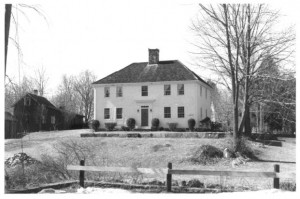Lying in an area of New London County just eight miles north of Long Island Sound is the North Stonington Village Historic District. Listed on the National Register of Historic Places in 1983, the Stonington Village Historic District features buildings, canals, bridges, and machinery that recall life in a typical early 19th-century New England mill village. Samuel Richardson originally acquired the site of North Stonington Village in 1682. Twenty years later, he sold 30 acres of the property (which makes up the center of the current village) to Nathaniel Ayers. After several more ownership changes, the property landed in the hands of Nathan Avery in 1766. By the time Avery and others in the area began selling off tracts of land, North Stonington was already bustling with mill activity. The mills in North Stonington helped give the modern historic village its character. Gristmills, sawmills, and cotton mills, among others, provided the foundation for the town’s commerce. In support of the mill industries, blacksmiths, cobblers, and merchants of all types set up shops. The mills thrived in North Stonington until the middle of the 19th century when the shoreline railroad line bypassed the area. The bypass forced mill owners to move their facilities to larger industrial areas along better transportation routes.

William Sisson House, Main Street, North Stonington Village Historic District – National Register of Historic Places
What the mills left behind was a village full of residential and commercial structures that typified the industrial experiences of many small New England towns in the early 19th century. The preserved structures, constructed primarily of wood, represent a variety of architectural styles, including Georgian, Federal, Greek revival, and Italianate. The oldest surviving house, which was built in the Georgian style in 1776, was first owned by William Sisson. The village itself spans an area consisting of Main Street, Caswell Lane, Babcock Road, Old Stonington Road, Rocky Hollow Road, and Wyassup Road. The uniformity of its structures, the archaeological potential of its former mill properties, and an extensive cache of records documenting early business transactions in North Stonington, all helped the village gain recognition as a national landmark worthy of preservation.









